






Whether selling or buying, I’m here to guide you with care and experience.


With over 2 decades of Real Estate expertise, Kris Gelbart is no stranger to today’s ever changing market. With countless awards, recognitions, and certifications, Kris is your one-stop-shop for everything Real Estate.


Kris Gelbart Cal DRE 01345809 858-395-0761 gelbartrealtygroup.com

PUBLISHERS
Diane Benaroya & Laurie Miller
EDITOR-IN-CHIEF
Alanna Maya
CREATIVE DIRECTOR
Laurie Miller
CONTRIBUTORS
Ariela Alush, Barbara Birenbaum, Franklin Felber, Donald H. Harrison, Jacob Kamaras, Stephanie Lewis, Salomon Maya, Jana Mazurkiewicz Meisarosh, Terra Paley, Mimi Pollack, Rachel Stern, Eva Trieger, Deborah Vietor, Chana Jenny Weisberg, Cheri Weiss
ADVERTISING & SALES
Diane Benaroya: dianeb@lchaimmagazine.com



SAN DIEGO, LLC (858) 776-0550
P.O. Box 27876, San Diego, CA 92198
EDITORIAL editor@lchaimmagazine.com ADVERTISING dianeb@lchaimmagazine.com
lauriem@lchaimmagazine.com
Copyright ©2025 L’Chaim San Diego LLC. All rights reserved. No part of this publication may be reproduced, distributed or transmitted in any form or by any means, including photocopying, recording, or other electronic or mechanical methods, without the prior written permission of the publisher, except in the case of brief quotations embodied in critical reviews and certain other noncommercial uses permitted by copyright law. For permission requests, write to the publisher, addressed “Attention: Permissions Coordinator” to: publisher@lchaimmagazine.com
Published in San Diego, CA • www.lchaimmagazine.com

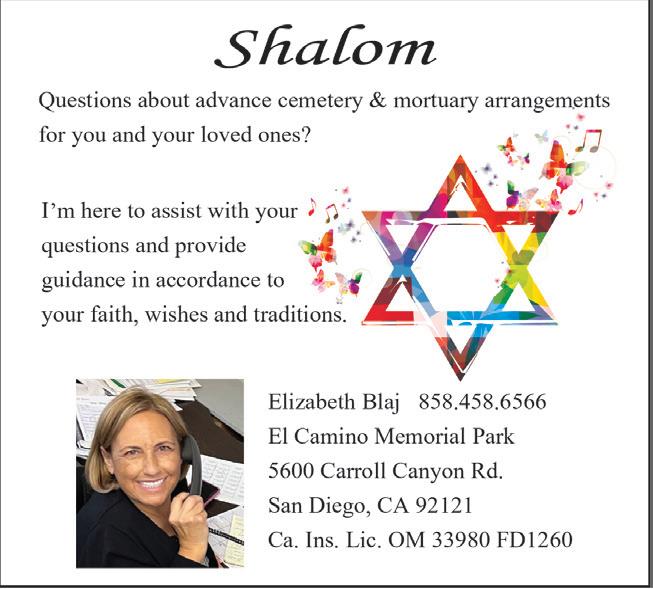


During my three-year tenure in Hawai‘i, I taught numerous Introduction to Judaism classes. While most of the lessons were conducted online, there was one class that I insisted students attend in person at the temple: my lesson on ritual objects. No photos of lit Shabbat candles, a beautifully-engraved kiddush cup filled with wine, or a colorful Seder plate can replace seeing or touching these precious items in-person.
I also led dozens of B’nai Mitzvah ceremonies during these years in Hawai‘i. After each young celebrant completed reading from the parsha (Torah portion), I invited everyone in attendance to come up to the Bimah and take an up-close-and-personal look at the Hebrew text inside our holy Torah. Sometimes the line of people extended to the very back of the Sanctuary! One by one, they looked in awe at the fine calligraphy etched onto the parchment, marveling when I said that it took a sofer (scribe) a year or more to hand-write the entire Torah onto that scroll.
The objects we use to perform our religious rituals engage our senses and draw us closer to our Jewish heritage. We welcome Shabbat and holidays by tasting the sweet wine from a cup reserved for kiddush, feel the warmth and see the glow of the lit candles, hear and
sing familiar Shabbat blessings and prayers from our siddur. We light the candles in our chanukkiah (nine-branched menorah) to remember the story of Chanukkah. We hear the story of Passover from the Haggadah while eating Matzah, Maror, and Charoset.
As we draw closer to the High Holy Days, we will have the opportunity to engage in rituals that can enhance our Jewish experience of these distinctive Days of Awe. We traditionally celebrate Rosh Hashanah with apples and honey, symbolizing our hope for a sweet New Year. We eat delicious round spiral challah (often with sweet raisins) rather than braided loaves to symbolize the continuity of life and cyclical nature of the seasons. Many people opt to wear white clothing to symbolize purity or new beginnings.
One of the most engaging rituals of the holidays is known as Tashlich. During this brief ceremony, we symbolically “cast away” our sins by tossing bread (or breadcrumbs or even sand) into a flowing body of water (ocean, lake, river, etc.) This practice is based on a passage in the Book of Micah (7:19), where the prophet says, “God will take us back in love, quashing our iniquities. You will cast all their sins into the depths of the sea.”
During prayer services on Rosh Hashanah and again at the conclusion of Yom Kippur, we will listen to the sounds of the Shofar. Hearing these blasts is meant to rouse our souls to reflect on our behavior of the past year and determine how we can do better going forward.
One of the unique prayers we will recite from our machzor (High Holy Days prayerbook) is known as the Viddui –confession of sins. While it is customary to lightly beat our hand over our hearts in a sign of repentance as each sin is recited, I have always asked congregants to instead lightly touch their hearts in a gesture of selfforgiveness.
Jewish rituals and ritual objects engage our senses of sight, sound, touch, smell, and taste to help connect us physically and spiritually to our rich traditions. As we celebrate the High Holy Days, may we each fully experience these Days of Awe with all our being. Wishing you a meaningful and inspiring Shana Tovah and a blessed year ahead.
RABBI-CANTOR CHERI WEISS IS AN INDEPENDENT LIFE-CYCLES OFFICIANT. LEARN MORE AT WWW.SANDIEGO-RABBI.COM
Something unique for the Jewish New Year! “Stretching Your Body While Kvetching Your Soul!” This was the clever slogan the yoga advertisement in our synagogue newsletter boldly proclaimed, leaving me clueless about what to expect at my first lesson. Would I be inhaling apples and honey while simultaneously exhaling the resentment I’ve held against my sisterin-law since Rosh Hashana 2018? Not quite! But just in time for the High Holidays, the traditional yoga poses have been renamed. There’s Downward Mensch—like Downward Dog, but you apologize the entire time for taking up too much floor space. And Lotus Lox—a seated position while fantasizing about everything bagels. Not to be confused with another carb conditioning called, Challah-Asana—bending forward, arms wide as if offering freshly braided bread to the entire universe. And my least favorite position (still called Child’s Pose) where you kneel down humbly, forehead to the mat, whispering “I know, I know. I need to call you more, Mom.” Yep! This was how I was welcomed to Jewish Oy-ga—where I reclined on comfy thick mats… just so the guilt could be laid on me even thicker.
Morning meditation was my first introductory class, led by Rivka. I closed my eyes, breathed in deeply, (smelling the kugel) and then breathed out (releasing the shame of not finishing law school) while silently repeating, “I am enough. I am enough. But,
if I bought my mother a condo in La Jolla, I’d be more than enough!”
Next class: Torah Toning (Could Purim Pilates be far behind?)—which was billed as lifting light weights while contemplating heavy questions. “If you stretch a resistance band on Shabbat, is it technically considered work?” This was followed by Ascending Schlep where I carried folded stacks of too tight yoga leggings up a set of stairs to sit in a semi-circle while holding Corpse Pose as an estate planner lectured on redoing our living trusts. This was where I first heard the rumor that next week they’re bringing in Chava, a rigorous instructor who will put us into warrior pose while subjecting us to her version of Hot Yoga. Basically, instead of turning up the thermostat, she’ll give her opinion on our life choices until we break a sweat. Apparently, she closes her sessions in a tranquil voice reminding us to relax and “let go and let God.” But also quizzing us on who will give her a first grandchild?
My favorite session has become Guided Kvetching (honestly it was a tie between kvelling and kvetching, but the latter won out) where loudly complaining is the official breathing technique. Naturally, I excelled. Also I easily memorized my three mantras 1. “Nobody appreciates how much I do.” 2. “Yes, my cousin Tova’s Yom Kippur outfit is white but it’s still tacky.” 3. “My eldest son will soon become my new dentist.” Oh! And a self-reflective question: “Do I really look
good in this leotard or is everyone just being polite?”
And the gifts! Just for registering for more Oy-ga classes, I got a free shirt. On the front it said, “Shalom and Namaste!” and on the back it said, “Powered by Rugelach!” Shabbat candles that smelled like lavender challah were also bestowed on me as well as a beautiful menorah shaped like the cobra pose. Included with the menorah were Chanukah candles with the scent of latkes fried in Tea Tree essential oil. However, the most impressive take-away was a water bottle with a sprayer so I could mist myself afterward, proving to everyone just how much I shvitzed during stretching.
I was so impressed that my temple is offering this new recreational option as an adjunct to membership that I wrote a review. “Our people have survived centuries without needing to stand on our (covered!) heads but it’s extremely refreshing to be humming, “Oy” instead of chanting, “Om.” For only $18 a class (yes, chai!) you can align your spine with your spirituality, flex your tush while you kibitz, and keep your soul limber and vibrant!
STEPHANIE D. GITTLEMAN WILL INJECT HUMOR INTO ANYTHING YOU HIRE HER TO WRITE. EMAIL HER AT THEQUOTEGAL@YAHOO.COM.
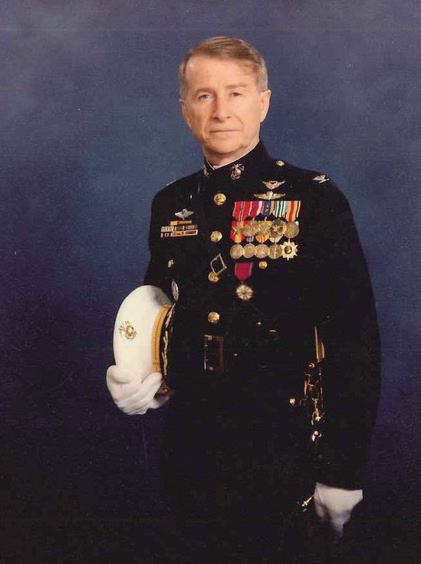
My son Shlomo and I attended the annual luncheon honoring the participants and donors of the Jerusalem Zoo’s youth exchange program. Formally called the Tisch Family Biblical Zoo, but popularly known as the Jerusalem Biblical Zoo, it is famous for its collection of wildlife—many of which are described in the Hebrew Bible—as well as for its global success in breeding endangered species.
The Jerusalem Zoo Foundation’s chair in San Diego is Helena Galper, who presided warmly over the event. Serving as emcee was the remarkable Judge Victor Bianchini, whose life is itself a story of resilience, service and unexpected passions.
I later sat down with Judge Bianchini at DZ Akins to learn more about his extraordinary journey—a stellar tapestry of public service, intellectual breadth, and yes, even combat sports.
Born into a multicultural, first-generation American family—his mother from Tiberias (then Palestine) and his father an ItalianAmerican Navy officer—Bianchini had a nomadic upbringing before settling in San Diego at age 13.
Along the way, his career took many turns: military officer, state and federal judgeships, seasoned mediator, and Fulbright scholar. Today, he is recognized internationally as an expert in alternative dispute resolution (ADR), legal education, judiciary reform, and complex dispute resolution.
Since 2002, Bianchini has practiced as a mediator and arbitrator— first with Judicate West, and later with Signature Resolution— handling more than 3,500 cases, including high-stakes patent disputes and class actions. His approach, blending evaluative and facilitative strategies, emphasizes empathy, patience, and persistence.
In parallel, his academic career has been prolific: Associate Professor at SDSU, chair of Criminal Justice & Business Law at National
University, adjunct professor at Thomas Jefferson School of Law, and Faculty Council member of the National Judicial College. As a Senior Fulbright Scholar to Eritrea, he helped draft the judiciary’s code of conduct and a 2,000-page judicial education syllabus—an enduring contribution to international law.
Bianchini’s public service began long before the courtroom. He served in the U.S. Marine Corps (active and reserve) from 1960 to 1991, retiring as a Colonel. His service included tank and forcerecon units, parachuting, Vietnam (as combat correspondent and crewman), and senior leadership roles, including Deputy Inspector General, USEUCOM during Desert Shield/Storm.
His decorations include the Legion of Merit, Bronze Star with Combat “V,” three Air Medals with “V,” the Joint Services Commendation Medal, and the Combat Action Ribbon, among others.
As if law and military service weren’t enough, Judge Bianchini discovered saber fencing at the age of 72, inspired by watching his daughter compete. He was immediately successful—and never looked back.
Now in his 80s, he has amassed 25 Gold, 15 Silver, and 27 Bronze medals in national and international competitions, and continues to compete on the world stage. This year, he is headed to Portugal to represent the United States once again.
Given his lifelong devotion to service and his deep love of animals, it was only fitting that Judge Bianchini emceed the annual luncheon in San Diego.
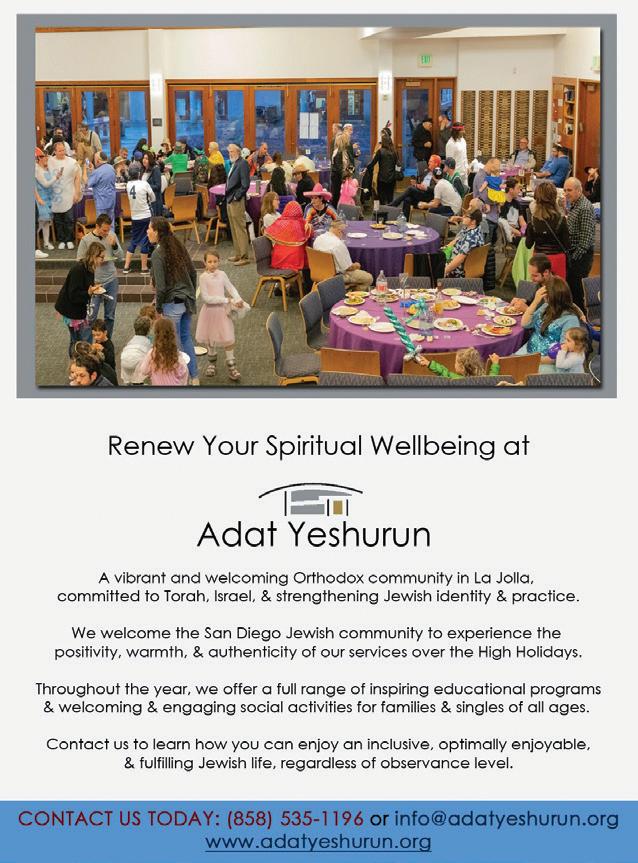
The highlight of this year’s gathering was a live Zoom call and presentation from two of the Jerusalem Zoo’s stellar staff. They delivered an award-winning talk titled “Resilience Under Fire,” which recounted the challenges of caring for animals during wartime.
Almost 40% of the zoo’s staff were called up for reserve military duty. Many lost close friends or relatives. Yet even in grief, they tended daily to the hoofed, winged, and four-legged residents of the zoo. Though the zoo was closed to the public for six weeks after the October 7 attacks, the animals never missed a meal, a check-up, or a moment of compassionate care.
Photos and spoken testimony revealed the heartbreak and the heroism: staff conducting behavioral studies on trauma-affected animals while sirens wailed, rockets thundered, and interceptors filled the skies. Through it all, they managed to maintain routine—not only for the animals, but for each other.
As the luncheon drew to a close, what lingered was more than just appreciation for animals or admiration for science. It was a deep sense of connection. In a world where unrest and division dominate the headlines, the partnership between the San Diego Zoo and the Jerusalem Zoo stands as a quiet testament to what can happen when curiosity, compassion, and collaboration cross borders.
The Jerusalem Zoo acts as both oasis and beacon—a sanctuary of peace and coexistence in a turbulent region, reminding us that even in times of war, compassion is the most enduring act of survival.
LEARN MORE AT WWW.JERUSALEMZOO.ORG.IL/EN/BIBLICAL-ZOO.

“Boldest Post in the West”
• Fight anti-Semitism
• Support our military overseas
• Support Naval Hospital San Diego & Naval Hospital Camp Pendelton
Meet on the 2nd Sunday of the month • 11am THE OLDEST CONGRESSIONALLY COMMISSIONED VETERANS
LCDR USNR Sheldon Kleiman 858-229-8847 Skleiman@sbcglobal.net


1. According to the Talmud, which workers smelled so bad that they were compelled to divorce their wives if their wives demanded it?
a. Fishmongers
b. Fertilizer spreaders
c. Leather tanners
d. Stable keepers

2. Who founded a small matzah bakery in Cincinnati in 1888 and invented the world’s first assembly-line square matzah?
a. Rabbi Streits
b. Rabbi Yehuda
c. Rabbi Manischewitz
d. Rabbi Gefen
3. When the Jews were slaves in ancient Egypt, about how many more gods did the Egyptians worship than the Jews did?
a. 2
b. 20
c. 200
d. 2,000
4. What is the chronological order in which these empires conquered Jerusalem?
a. Babylonian, Greek, Roman, Islamic
b. Greek, Roman, Babylonian, Islamic
c. Islamic, Babylonian, Roman, Greek
d. Babylonian, Islamic, Greek, Roman
5. What was the name of the first Greek translation of the Torah?
a. Septuagint
b. Septagenuensis
c. Shevi’im
d. Evdominta
6. Which state has an area closest to the area of Israel?
a. Rhode Island
b. New Jersey
c. Massachusetts
d. Pennsylvania
7. Who created the antisemitic forgery, The Protocols of the Elders of Zion?
a. The secret police of the Russian Tsar
b. Henry Ford
c. The Prussian Security Service, predecessor of the German Gestapo
d. The German Bund in America
8. What is the literal meaning of gefilte fish?
a. Guilt-offering fish
b. Filtered fish
c. Jellied-broth fish
d. Stuffed fish
9. According to the Torah, someone convicted of stealing and then slaughtering or selling an ox must pay what multiple of the value of the ox?
a. Two times the value
b. Three times the value
c. Four times the value
d. Five times the value
10. What is the ending of the Yiddish saying, “Small children, small worries. Big children …”?
a. … oy vay!
b. … big worries.
c. … worry for themselves.
d. … forget about it.
Answers on page 21. ©2025 Felber, Starmark, Inc., all rights reserved.

Rosh Hashanah is a pause and a promise—a time to remember, return, and begin again.
In San Diego, that promise became a twoyear journey that moved from history’s footsteps back to our own streets.
The journey started on the road.
StandWithUs San Diego led missions through Portugal and Spain, tracing 1,000 years of Sephardic Jewish life in the long shadow of the Inquisition, and then to Poland, walking the story of 1,000 years of Ashkenazi life from vibrant neighborhoods to silenced tracks. They travel because memory makes strength possible. “You can’t understand what you lost if you don’t understand what you had. That’s why we’re leading these missions—we are learning about 1000 years of living Jews.” says Executive Director Oz Laniado. “In Iberia, the status of Jews changed within less than a decade—a reminder of how quickly history can turn.”
Back in San Diego, that memory became muscle. Under Executive Director Oz Laniado, with Associate Director Ashley Levy and Antisemitism Task Force (ATF) Director Liat Cohen Reeis—the chapter rewired how a city learns, links arms, and leads. It has also emerged as StandWithUs’s Southwest hub, serving communities well beyond county lines. This past school year alone, the team delivered 50 programs in San Diego that reached 11,000 students and brought Holocaust survivors to speak to hundreds at local high schools—carrying witness into the places it matters most.
Alliances widened and deepened. StandWithUs San Diego was front and center at community-wide events—from Yom Ha’atzmaut to JPride and the House of Israel Lawn program—reaching thousands. The chapter convened church partners for pro-Israel programs (including an evening with Dr. Einat Wilf) and brought in bridge-builders like Dumisani Washington to strengthen African American–Jewish ties. We marched alongside our Hindu brothers and sisters in solidarity and friendship. We had the privilege of meeting Native American leaders from the First Nations where we forged meaningful connections and began planning collaborative events. A Muslim–Jewish dialogue traded suspicion for conversation. And in public squares, Jewish and Hindu neighbors marched together, turning a moment into ongoing collaboration. Even the quiet corners changed: in recent years the chapter supported the House of Israel with security and educational materials so its doors could stay open—a steady heartbeat in Balboa Park.
Some stories explain the mission better than any spreadsheet. A non-Jewish student from Iraq, who survived ISIS, found her footing in San Diego and is now a StandWithUs Emerson Fellow— teaching classmates about fanaticism, freedom, and why silence is never neutral. That’s the kind of coalition you can’t fake.
Inside this broader mission, Liat Reeis’s Task Force plays a specific role: small, fast, factual—special forces in service of a larger army of
educators and allies. It helped city leaders move from confusion to clarity as IHRA passed unanimously in El Cajon, Chula Vista, and the City of San Diego Human Relations Commission, with five more municipalities preparing votes this fall. It pushed a measured response to celebrity rhetoric—the Kehlani campaign reached over five million people—and kept the chapter’s voice steady with 21 placements in local and national media. It backed tens of cases through legal channels, so harassment met consequences, not shrugs, and supplied a “Beware of CAIR” brief so policymakers had facts at hand, not rumors on their phones.
The rhythm has been relentless and intentional. Early September brought a Christian–Jewish solidarity gathering that felt more like family than coalition; September 11 hosted a tough conversation withBrigitteGabrielonradicalizationandcommunitypreparedness; and a leadership roundtable is bringing 10 IDF soldiers together with local Christian pastors for first-hand understanding that can’t be tweeted.
What changed behind the scenes? Relationships matured. Ashley Levy became a force multiplier—turning introductions into pipelines, ideas into committed action, and civic curiosity into ongoing briefings. The Advisory Board and Task Force Board— rooted in a mutually shared vision—traded “we should” for “we did,” while Laniado kept the compass set on education first, coalition always, and results you can count. The chapter learned to move quickly without becoming noisy (helped, rumor has it, by excellent coffee).
Even celebration is part of the plan. This year, StandWithUs San Diego is honoring courageous community leaders and students— people who chose to act when a headline became a hallway conversation. And on November 16, the chapter gathers for its Gala with Michael Rapaport—serious purpose with room for laughter, because resilience and joy are not rivals.
Rosh Hashanah asks for cheshbon hanefesh—an honest accounting. San Diego’s reads like this: we remembered, so we could rebuild. We learned Iberia to honor what was; we walked Poland to face what was lost; and we came home to make both stories useful. In between, educating students and community members, gathering in grief and celebration, sharing stories of survival and resilience, alliances grew, officials were briefed, policy got clearer, cases were prosecuted, and a city remembered how to stand together in daylight.
The shofar’s call is simple and not easy: wake up. San Diego is awake. With Laniado’s vision, Levy’s creativity, Reeis’s precision, and boards that think like builders, the chapter enters the new year with a promise—to keep doors open, keep facts close, and keep each other closer. May our remembering make us brave, and our beginnings make us kind.
Shanah tovah u’metukah. Extra honey encouraged.
LEARN MORE AT WWW.STANDWITHUS.COM.

BY ERIN GRUNSTEIN-HALPERN, @ERIN.EATS.MTL
Perfect for the High Holidays, this Onion Chestnut Smothered Chicken brings depth, warmth, and a touch of sweetness to the table. Succulent drumsticks are slow-roasted over caramelized onions and glazed with a rich blend of honey, tomato paste, red wine, and fresh rosemary - flavors that evoke tradition and celebration. Finished with hearty chestnuts, this dish is a beautiful balance of comfort and elegance, ideal for gathering with loved ones and welcoming a sweet new year.
Ingredients
1-2 onions
8 chicken drumsticks (skin on)
2 tbsp honey
2 tbsp tomato paste
2 tbsp extra virgin olive oil
2 garlic cloves
2 tbsp dry red wine
Freshly ground pepper
1 tsp salt
1 large sprig fresh rosemary, removed from stem and chopped
1 bag chestnuts, chopped
Directions
1. Preheat oven to 350°F.
2. Slice onions and spread at the bottom of the pan and top with chicken.
3. In a bowl, combine honey, tomato paste, oil, garlic, wine, salt,
pepper and rosemary.
4. Spread mixture over chicken. Add chestnuts to the pan. 5. Bake covered for 1 hour. Uncover, baste and cook for an additional 30 minutes.
Recipe Developer Erin Grunstein-Halpern lives in Montreal, Canada with her husband and 4 children. She is a pediatric physical therapist. As a newly married woman, Erin developed a love for being creative in the kitchen and eventually started sharing recipes on her Instagram page, @erin.eats.mtl.
She knows how busy life can be and her goal is to share easy and healthy(ish) recipes for the busy family. While sharing recipes, Erin gained a love of food photography as well and now she develops recipes with accompanying photographs for different companies. Erin’s goal is to bring families and friends together around the table, and she believes that a shared love for food and tradition are the key ingredients to making this happen.
This recipe was submitted by Sharsheret: The JewishBreast and Ovarian Cancer Community. For more information, visit sharsheret.org.
SHARSHERET IS A JEWISH NON-PROFIT ORGANIZATION THAT SUPPORTS EVERYONE, REGARDLESS OF BACKGROUND, RACE, GENDER, SEXUAL ORIENTATION, AGE, OR RELIGION.
BY SANDRA SCHELLER
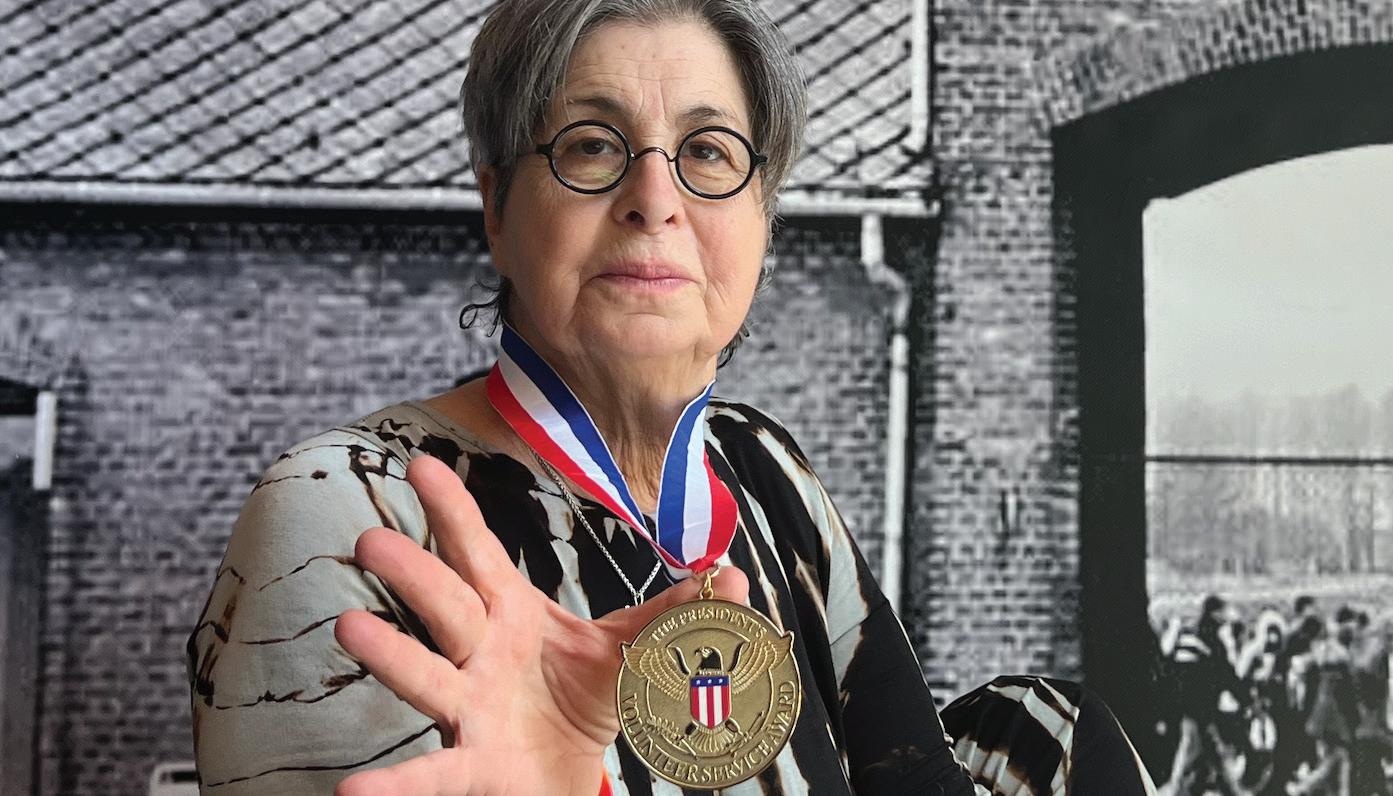
My name is Sandra Scheller. I’m the daughter of Holocaust survivors, and my mother and maternal grandparents were also Auschwitz Holocaust survivors. I grew up in Chula Vista, CA, and after high school I discovered the art of mime.
In 1975 and 1976, I was honored to be named the top female mime in a national competition. I later became a judge for that same competition. In 1978, I transitioned into flamenco dancing—another expressive art form that, like mime, required no words. Around the same time, I also held a rare and rather unusual job: I was the assistant to a knife thrower. Again, it was a silent role—and I was never hit by the blades.
By 1980, I had earned my bachelor’s degree and met the man who would later become my husband. We married in 1984, and he is not only the father of my children but also the love of my life. He remains
incredibly supportive of what I’m trying to accomplish today.
You see, I have what I call a strange inheritance—a dress worn by my grandmother while she was imprisoned at Auschwitz. It was passed down to my mother, and eventually, it was given to me. This is not just a piece of fabric; it is a profound historical artifact. Many museums have expressed interest in acquiring it, but I believe it belongs in San Diego—in a museum that does not yet exist.
Despite San Diego’s size and the fact that many Holocaust survivors settled here, the city has never had a dedicated Holocaust museum. I’ve come to understand that while our parents and grandparents were focused on surviving and rebuilding their lives, the idea of creating such a space may not have been a priority. But it is now my mission.
In 2019, shortly after my mother Ruth passed away, I founded Remember Us The Holocaust, named in her honor. I could

not let her memory fade. I felt—and still feel—a deep responsibility to lead by example for other children of survivors, encouraging them to preserve and share the stories of their parents and grandparents. Something amazing has happened since we began organizing exhibits in 2020. People from all walks of life have come forward, trusting our organization with the sacred responsibility of preserving memory. They have donated personal memorabilia — items that carry deep emotional and historical significance.
Even more remarkable is when we receive calls from attorneys and the courts, informing us that they’ve come into possession of Nazi memorabilia that must be placed in the right hands. It’s a profound responsibility—and an honor—to ensure these items are not exploited or forgotten but instead used to educate and tell the truth. Through these exhibits, we’ve come to understand something
crucial: the need for a permanent, physical Holocaust museum here in San Diego. Temporary spaces can only go so far. We’ve witnessed the powerful impact of in-person programs, school field trips, and educational visits. What’s truly moving is when children return with their parents—eager to share what they’ve learned. These experiences show us just how important it is to have a lasting place of remembrance—one that tells the truth and keeps history alive.
We know that creating a permanent Holocaust museum in San Diego is going to be a long road. All I ask of God is to give me the time and strength to see this project completed—and to enjoy the fruits of this labor of love.
Most of all, I want our Holocaust survivors here in San Diego to live to see it too — to witness a space dedicated to their stories, their strength, and their legacy. A place that ensures their truths will never
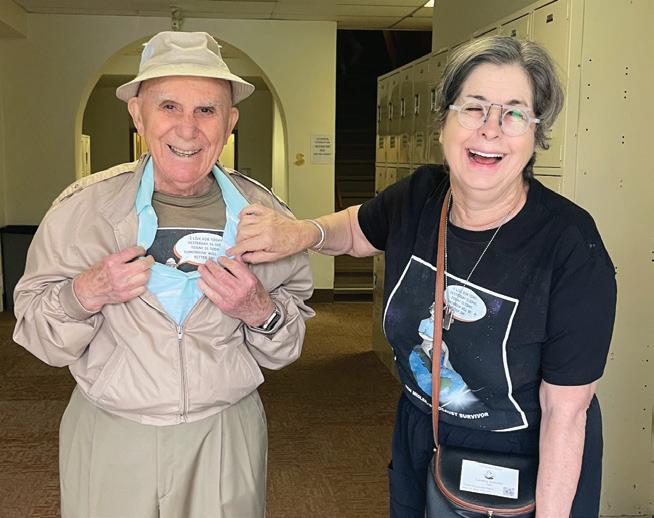
be lost, but instead passed on—to future generations who need to hear them most.
I am truly blessed that I don’t have to do this alone. With the help of Sam Landau, Paul Nussbaum, Barry Soper, and David Beck Brown, we have built a strong and dedicated foundation committed to preserving Holocaust memory and educating future generations.
What’s even more remarkable is how our foundation has grown stronger through the support of the San Diego Museum Council, Bob Lehman, and the Imperial Court Council, led by Nicole Murray Ramirez. Their involvement has brought powerful new alliances and shared purpose.
You see, they have been fighting for their own rights and freedoms through advocacy for the LGBTQ+ community—just as we, as Jews, continue to fight for the freedom to remember, to tell our stories, and to make choices about how our history is preserved and honored. There is a deep and meaningful connection in our shared struggles and mutual respect.
Additionally, I’ve been humbled by the support and guidance of members from the Jehovah’s Witnesses community. They have come forward to educate me about their own suffering during the Holocaust—a history that is often overlooked. Their voices, too, are part of the story we aim to tell.
Together, we are building something greater than ourselves—a permanent home for truth, remembrance, and unity across communities.
Right now, my goal is simple but deeply important: to ensure that every Holocaust survivor who is willing to speak has the opportunity to be heard. When we listen to a Holocaust survivor, we become witnesses ourselves—and that is one of the most powerful tools we have against forgetting.
I often think about what the world will look like five years from
now. It’s hard to imagine, especially because the Holocaust survivors of San Diego have become like family to me. They guide me, keep me grounded, and make sure I’m staying true to this mission. And trust me—if I do something that doesn’t sit right with them, they don’t hold back. I welcome that honesty, because it keeps this work real and accountable.
My greatest hope is that younger generations can embrace these stories not only with empathy but with strength. That they see the lessons of the Holocaust not just as painful history, but as a call to action—to stand up, to speak out, and to never let hate go unchallenged.
Do I see a Holocaust museum in San Diego in the near future? Yes, I do—with help from the community. But it will take many voices, lifted together, to reach God’s ears.
G-d has not let me down yet—not after what my family endured in the Holocaust. That faith, and the strength passed down to me, continues to guide every step of this journey.
The Holocaust exhibit is open during La Jolla Library hours, with free educational programs held on the second Tuesday of each month at 6 p.m. This important project is funded by the San Diego County Board of Supervisors through the Neighborhood Reinvestment Grant.
The exhibit features the powerful ceramic artwork of Maria Coleman, a Holocaust survivor, alongside rare Holocaust memorabilia that has been generously collected and donated to our organization. These items are displayed with historical banners that offer reflection, education, and lessons from the Holocaust—reminding visitors of the past while encouraging dialogue for a better future.
TO SCHEDULE A TOUR OR MAKE A DONATION TO THE EXHIBIT—INCLUDING WORLD WAR II MEMORABILIA—OR TO ARRANGE FOR A HOLOCAUST SURVIVOR TO SPEAK OR HAVE THEIR STORY DOCUMENTED, PLEASE CONTACT ME AT REMEMBERUSTHEHOLOCAUST@GMAIL.COM OR CALL (619) 422-3429.
SINGING & SHARING a variety of traditional Jewish music
We welcome new members!
Email Rita for more info: rheller8@gmail.com


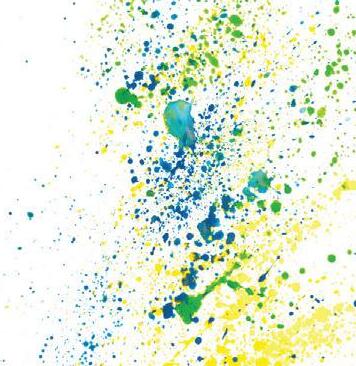

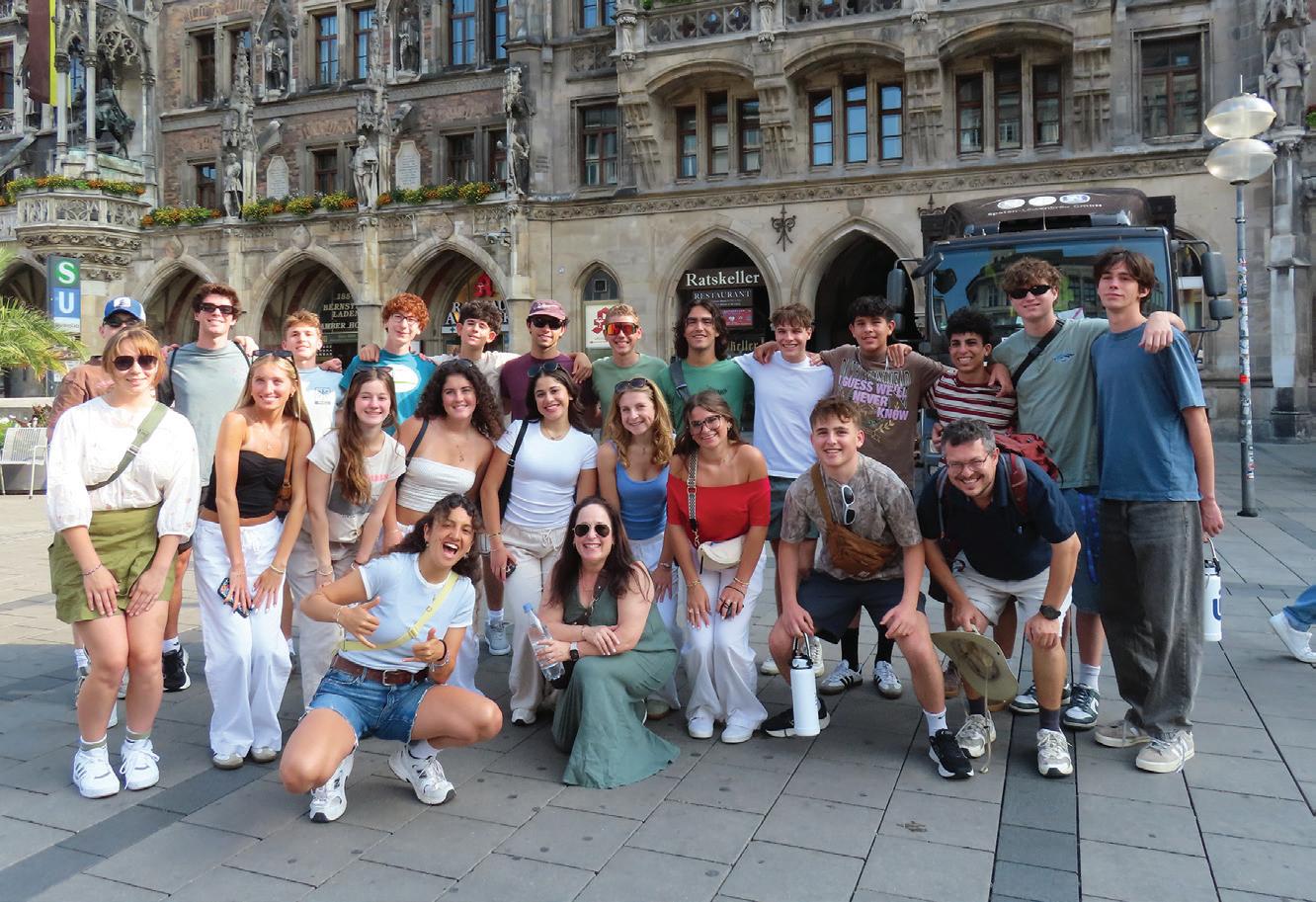
Travel has the power to shape identity, deepen understanding, and create connections that last a lifetime. Through programs like Israel Unfiltered, the Global Ambassador Program (GAP), and Giborim, Jewish Federation of San Diego is transforming the way teens and young adults experience Jewish life—empowering them to explore their roots, engage with global communities, and build bonds that transcend borders.
This summer marked the launch of Israel Unfiltered, Federation’s new teen travel program designed to give high school students an authentic, real-world encounter with Jewish identity. While the inaugural trip was originally planned for Israel, unexpected circumstances rerouted the journey to Europe, where teens traveled through Munich, Prague, Budapest, and Vienna, and beyond.
What could have felt like a setback became a transformative experience. Teens stood in historic synagogues, reflected at Holocaust memorials, and connected with vibrant Jewish communities rebuilding in the heart of the Europe. Along the way, they discovered that Jewish identity isn’t defined by geography—it adapts, evolves, and connects us wherever we are.
That same spirit of connection came to life through the Global Ambassador Program (GAP), where relationships built across continents grew even stronger this year. Last summer, San Diego teens traveled to Budapest to connect with Hungarian peers. This July, Federation welcomed a delegation from Budapest to San Diego for the first-ever reverse exchange.
Together, they explored our city, shared traditions, and deepened conversations about identity, community, and belonging. As one San Diego parent reflected: “It was so wonderful to see the teens engaging with each other on so many levels, asking questions and sharing
perspectives. They clearly left with an appreciation for each other, the program, and new and renewed friendships.” GAP give teens opportunities to explore identity and community while becoming part of a global Jewish network.
Federation’s commitment to global connection extends beyond teen programming. In August, sixteen young adults from Sha’ar HaNegev, San Diego’s partnership region in Israel, joined local San Diego participants in Giborim, a Jewish Federation of San Diego program aiming to support young professionals in leadership skill building in each city. Giborim brings together young professionals from twelve San Diego Jewish organizations, forming a diverse cohort dedicated to leadership, collaboration, and communitybuilding. Together with their Israeli counterparts, participants spent the week forging relationships, sharing stories, and exploring ways to strengthen Jewish life locally and globally.
For returning Israeli participant Liat Hagbi, the visit was both powerful and personal: “The feeling of San Diego for Sha’ar HaNegev is that it’s home…These are the next leaders and generations on both sides.”
From across Europe to Sha’ar HaNegev to San Diego, Federation’s teen and young adult travel programs are more than trips—they’re opportunities to connect, reflect, and grow. They build bridges between communities, strengthen our ties to Israel and global Jewry, and empower the next generation of Jewish leaders to carry those connections forward.
FOR MORE INFORMATION CONTACT MOY ARBITMAN AT MOYA@JEWISHINSANDIEGO.ORG OR (858) 737-7138.


1. c. Because their bad odor could not be removed, both tanners and the collectors of dung for tanning had to grant a divorce upon request, even if the wife knew his occupation beforehand [Ketubot, 9:10]. Tanners had their own synagogues in Babylon. Maimonides said that working even one day as a tanner made a man unfit for high office.
2. c. Rabbi Dov Ber Manischewitz discovered that the secret to entirely automated mass production of matzah was the square shape. His assembly-line matzahs were certified kosher by rabbis from all over the world.
3. d. The ancient Egyptians worshipped about 2,000 different gods, including gods with heads of crocodiles, hippos, and falcons.
4. a. Babylonian (422 B.C.E.), Greek (331 B.C.E.), Roman (70 C.E.), Islamic (638 C.E.).
5. a. Ptolemy II, the Greek Pharaoh of Egypt, gathered 72 Torah scholars and had them each separately and independently translate the Torah from Biblical Hebrew into Greek, probably in the Third Century B.C.E. According to Tractate Megillah of the Talmud, their versions of the translation, which became known as the Septuagint, were identical.
6. b. The 8,729 sq. mi. area of New Jersey is closest to the 8,550 sq. mi. area of Israel. Even their shapes bear some resemblance – longer than wide and with a southern tip.
7. a. Created early in the 20th Century by the Tsar’s secret police, this antisemitic tract was published and widely disseminated by Henry Ford in the 1930s.
8. d. Although some youngsters may call it guilty fish, gefuellte Fische in German is literally stuffed fish.
9. d. Five times the value is the penalty for stealing and then slaughtering or selling an ox; four times the value is the penalty for a sheep (Ex. 21:37). Rabbi Meir attributes the higher penalty for an ox than for a sheep to the greater economic impact on the victim from the loss of a working beast of burden.
10. b. ... big worries. “Kleiner kinder, klein zorgen. Groise kinder, groise zorgen.” This is similar to another Yiddish saying, “Small children can be carried on the hand. Big children are a weight on one’s head.”
0 – 2 Talmid/Talmida (Student)
3 – 5 Melamed/Melamedet (Teacher)
6 – 8 Talmid Chacham/Talmidat Chacham (Scholar)
9 – 10 Gaon/Gaona (Genius)
Your comments are welcome at Felber@Jewish-IQ.com
©2025 Felber, Starmark, Inc., all rights reserved.
BY EVA TRIEGER
As Rosh Hashanah fast approaches Jews all over the world look forward to a fresh start and a truly inspired Yom Tov season. What better place to find this sense of renewal and rededication than La Jolla’s jewel, Adat Yeshrun? This Modern Orthodox shul has just welcomed a new assistant rabbi, Rabbi Binny Fiederer and his wife, Michal on board. In a recent Zoom interview, I was able to meet Rabbi Fiederer, as well as congratulate new shul president, Mitch Shack.
Rabbi Fiederer hails from suburban Philly, Elkin Park, to be precise. He was the oldest child raised in a close-knit shul environment. The rabbi credits his mentor, Dov Aaron Brisman, with instilling in him a sense of purpose and connection in his community shul. With Rabbi Fiederer’s close involvement in the shul, he learned to connect with people of all ages, He grew up knowing he was a valued member of the community and enjoyed contributing even as a young bucher. And … once a Phillies fan … always a Phillies fan.
Rabbi Fiederer shared that he is most fascinated by the intersection of Torah and Psychology. He welcomes the opportunity to grow as a human and help others do the same. He told me he revels in “taking what we have and channeling it with Torah and Hashem.” His master’s in social work has enabled him to support others.
The rabbi will be responsible for working with the youth, young families and the shul. He will be giving talks, be a driving force of the upcoming Sukkah hop, and engaging every member of the shul.
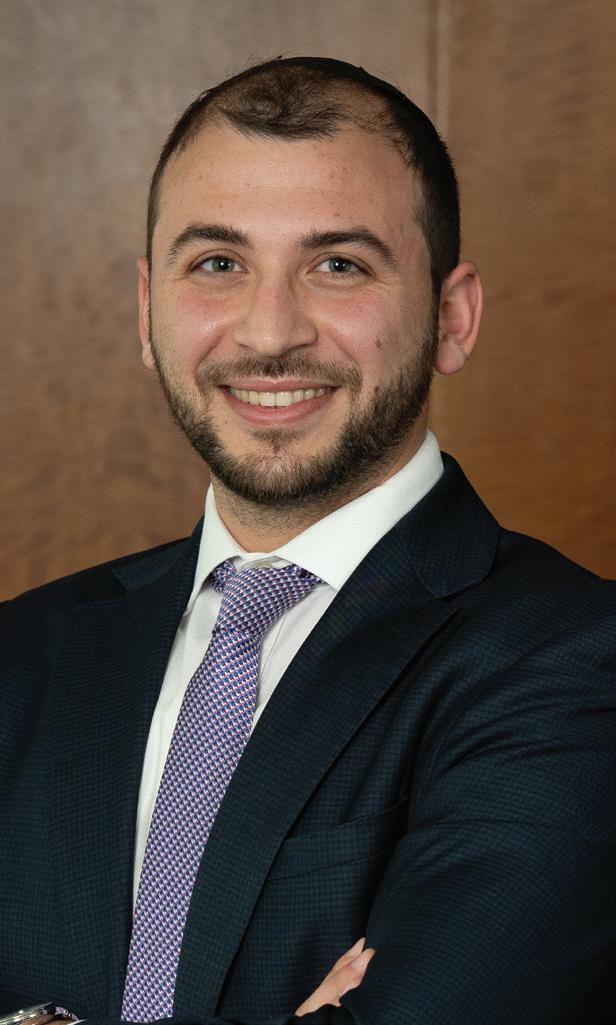

He told me he is enjoying pushing himself to try things outside of his comfort zone, including davening Musaf, creating marketing materials, and fully engaging in Adat’s culture. The rabbi reported that he has found great support and a warm welcome from congregants, as he and his rebbetzin, Michal, anticipate Baby #1 into this warm, supportive environment.
Veteran congregant Mitch Shack, has graciously stepped up to the post of president of Adat Yeshurun. Over the past ten years Mitch, a behavioral scientist, has observed the growth and changes in the shul’s congregation and he reported that he is excited and honored to be working alongside both Rabbi Daniel Reich and Assistant Rabbi Binny Fiederer to bring about greater Jewish connections not only at Adat Yeshurun, but throughout the San Diego Jewish community. The new president reported that while Adat is Modern Orthodox it is an accepting, welcoming and inclusive environment that welcomes everyone. Mitch expressed his admiration for Rabbi Reich’s ability and willingness to foster connections with other shuls and organizations to create an inclusive, strong Jewish community not only in La Jolla, but one that extends beyond our eruv, into the greater San Diego County.
As we enter into 5786, may this new year bring each of us health, peace, connection and happiness.


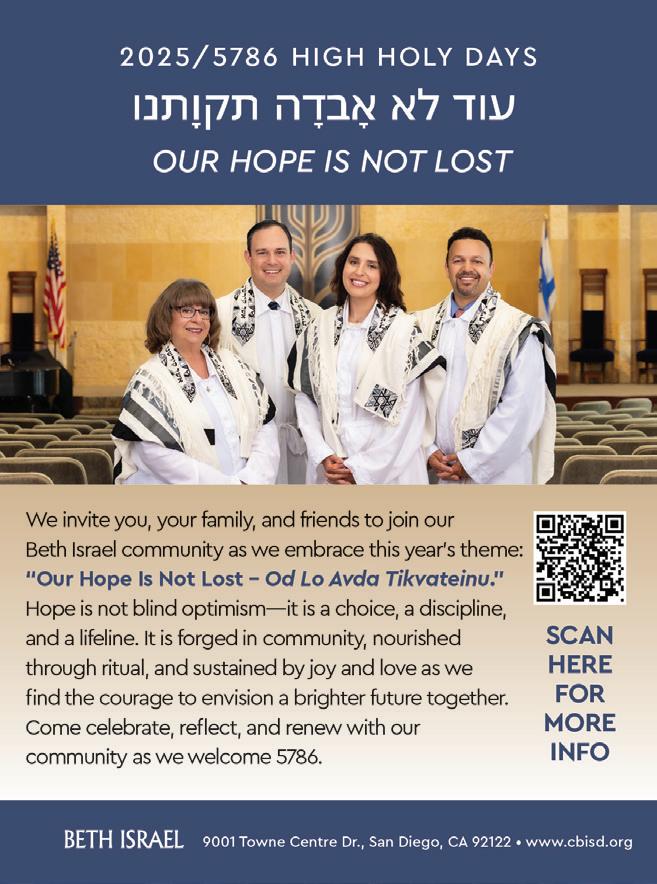
La Jolla & Encinitas
locations Open from 7:30am - 3pm everyday La Jolla (858) 454-8409 cottagelajolla.com
Encinitas (760) 854-4212 cottageencinitas.com


When you show this coupon. One per customer. Expires 9/30/2025

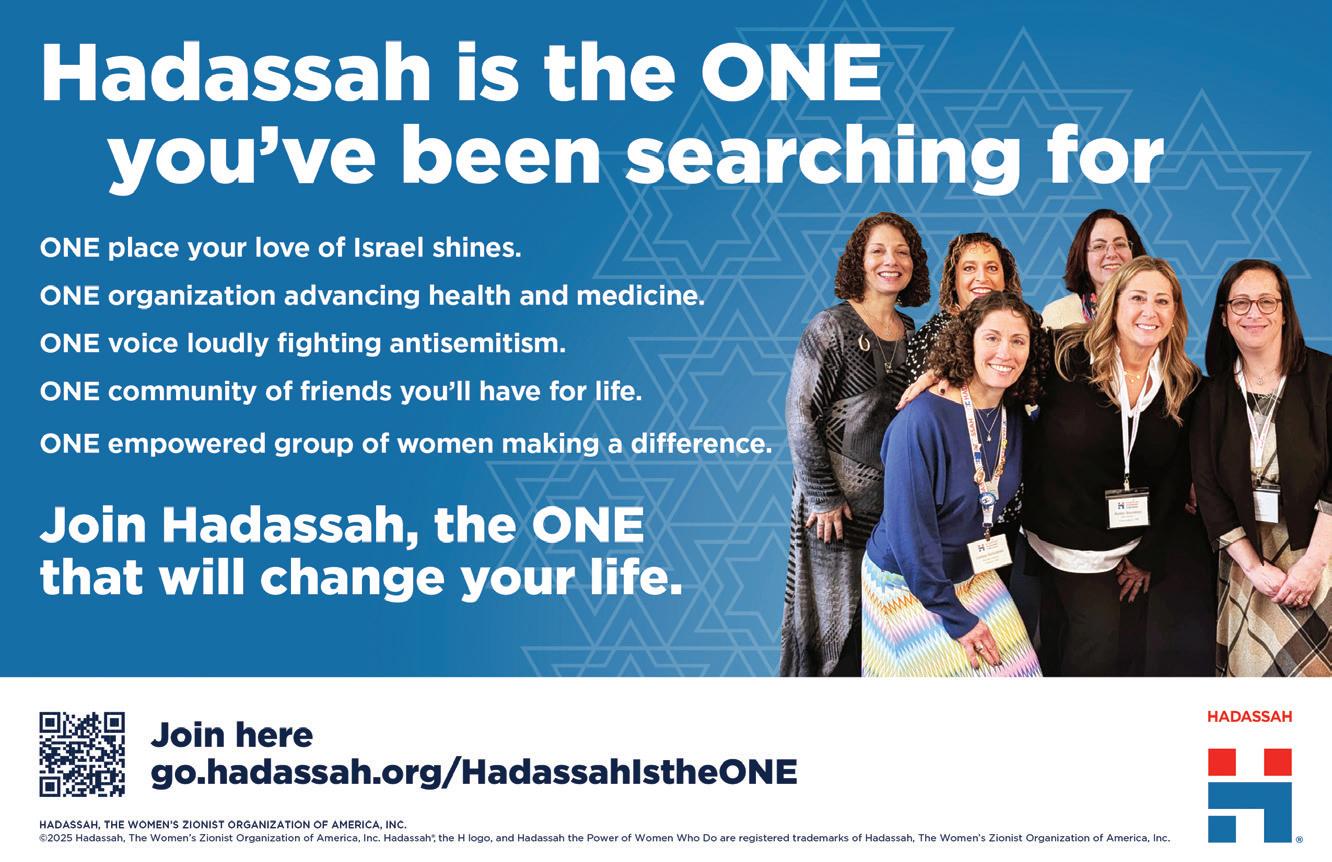

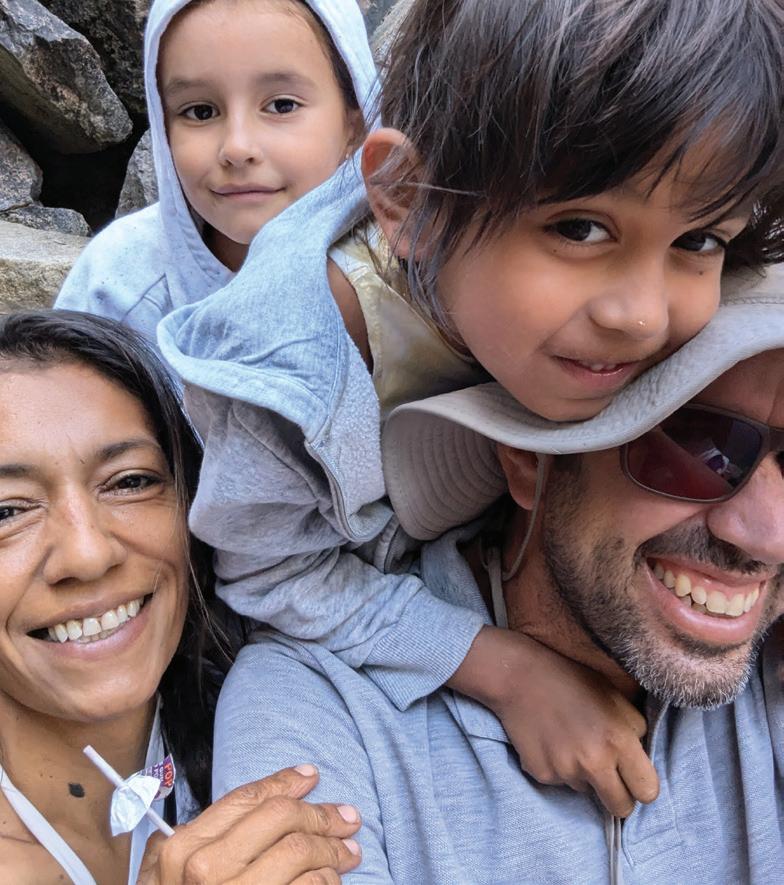
When Rabbi Ryan Newfield arrived at Ner Tamid Synagogue last summer, he didn’t just bring along his wife Andrea, their children, and a lifetime of experiences gathered across the world—he also brought a vision for Jewish life rooted in connection, creativity, and joy. We sat down with him to hear what drew him to Poway, why he chose Ner Tamid, and how his vision for Jewish community is already beginning to take shape.
L’CHAIM: What first drew you to Ner Tamid?
Rabbi Ryan Newfield: Let me answer that in two ways—first, about Poway, and then about Ner Tamid. When I lived in San Diego 12 years ago, I had never even heard of Ner Tamid. Poway felt far from my home in Carmel Valley. In fact, my strongest memory of Poway back then was getting a traffic ticket one misty night when I went to a shiva home and couldn’t see the “no turn on red” sign! Not the best impression.
But San Diego has changed. Many Jews are moving east for affordability, and I’ve discovered Poway is only 15 minutes from Carmel Valley along the 56 freeway. Today, I see Poway as a scenic, mountain-filled, vibrant place with beautiful walks and lakes. My impression has completely changed—I love it.
And Ner Tamid itself? When I heard that the synagogue was looking for a rabbi, and that it truly lived by its motto of being a “warm, inclusive, and compassionate” community, I was sold. I was looking for a congregation that welcomes the stranger, lives Jewish values, and embraces growth. I feel I’ve found all of that here.
L’CHAIM: C an you share what it felt like to step onto the
campus and meet the community for the first time?
RN: My first impression was probably the same as anyone’s: Wow. The sanctuary is stunning—colorful stained-glass windows, high beam ceilings, and probably the best view of any synagogue in San Diego.
Then came the humor. I was asked to do a Q&A with the kids in front of their parents. They asked questions like, “Is an Oreo a sandwich? Is a hot dog one too?” No rabbinic training could prepare me for that! But through their playful questions, I realized: this is a community that is fun, down-to-earth, and real. People here are trying to do good in the world while being themselves. The more I’ve been here, the more I see what gems we have.
L’CHAIM: Why did you choose Ner Tamid as your next chapter?
RN: Honestly, I wasn’t sure I wanted to be a pulpit rabbi again. I considered going back into the business world. But this opportunity— to help build a community in a beautiful part of San Diego, with people who live by the essence of Jewish values—made me rethink everything.
I now believe what we’re creating at Ner Tamid has the potential to become a model for communities worldwide: how to live Jewishly, with joy, in the 21st century.
L’CHAIM: What vision for Jewish life were you hoping to bring to reality here?
RN: My focus is on creating social opportunities for Jews and for supporters of Israel and spirituality to come together at events that are fun. Technology is a blessing, but too much of it leaves us isolated.
With humor, vision, and hope, Rabbi Ryan Newfield is leading Ner Tamid into a joyful new chapter—one that blends tradition with creativity, and community with connection.
arts, crafts, learning, social impact, healing, and more, there’s truly something for everyone. We even started the Rabbi Ryan Channel, a weekly WhatsApp message where I share short inspiration before Shabbat.
And for families, we made Shul School tuition-free with membership. It’s a happy, engaging place that connects kids to Judaism through holidays, Shabbat dinners, excursions, and community. With our amazing teachers, it’s a gift for kids and parents alike.
L’CHAIM: When you imagine Ner Tamid in five years, what do you see?
RN: I see a community that extends far beyond synagogue walls—a true hub of Jewish life in North County, with daily events and a thriving campus that brings spirituality, friendship, and joy to San Diego.
L’CHAIM: What message would you share with someone in North County looking for a Jewish home?
RN: You will be hard-pressed to find a warmer, more down-to-earth, and more inviting community than ours. We live by our motto: “warm, inclusive, compassionate.
”Visit once, and you’ll feel the family atmosphere. Join when it feels right—we’ll welcome you with red carpet treatment.
L’CHAIM: And finally, one word to sum up this journey?
RN: Can I say four? To infinity and beyond! With humor, vision, and hope, Rabbi Ryan Newfield is leading Ner Tamid into a joyful new chapter—one that blends tradition with creativity, and community with connection.
LEARN MORE AT WWW.NERTAMIDSD.ORG.
People are craving real-life connections. If we can offer meaningful, joyful experiences—whether on Shabbat, holidays, or throughout the year—we can change lives.
L’CHAIM: What kind of synagogue community do you believe people are longing for today?
RN: Authenticity. People no longer come to synagogue out of guilt or habit. They want meaningful relationships, connection, and fun experiences. A synagogue has to offer both spirituality and vibrant social opportunities, for every age and stage.
L’CHAIM: How is your vision already coming to life at Ner Tamid?
RN: Firstly, our synagogue services are intimate, authentic, and feel like family. That warmth is what people experience when they walk through our doors, and thankfully, our numbers are growing. We also launched JAMeets—Jewish American Meets—a social hub with more than 20 groups. From men’s and women’s groups to

BY DONALD H. HARRISON
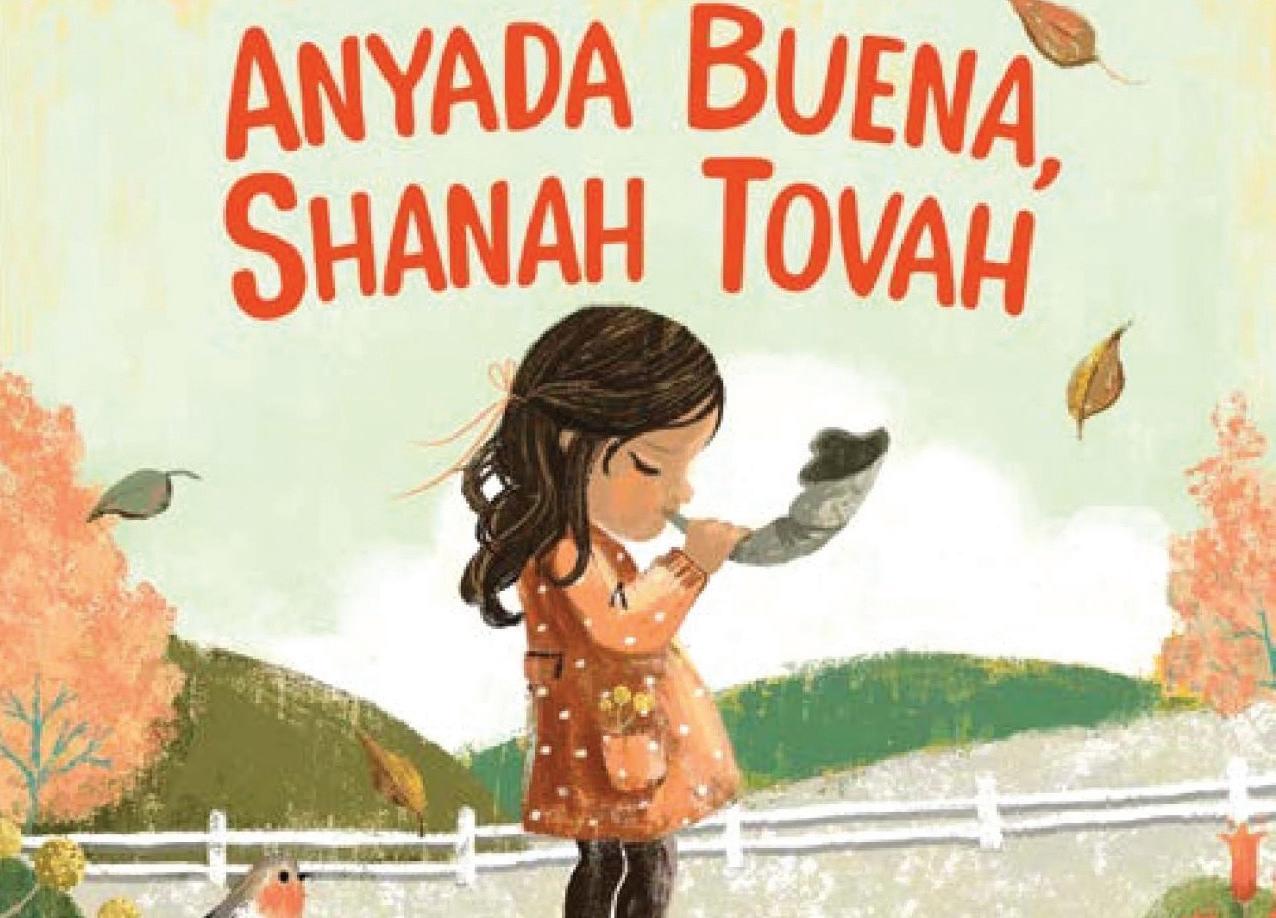
For those who grew up in the Sephardic tradition, Anyada Buena, Shanah Tovah by Sarah Aroeste with illustrations by Maria Mola may be a simple primer about Rosh Hashanah. But for those Jews who grew up in the Ashkenazic culture, it is an introduction to the way Sephardic Jews celebrate a familiar holiday.
The words Anyada Buena are the Ladino equivalent of the Hebrew expression Shanah Tovah, or the English hope for a “Good Year!” Challah is spelled halá, and like their Ashkenazi cousins, the Sephardim like round halá to eat on the New Year’s holiday, which they spell Rosh Ashana.
Sephardim have the custom of a Rosh Ashana seder, with eight symbolic foods that the book pictures but does not name. However, another source lists the foods as apples, dates, leeks, spinach, squash, black-eyed peas, a fish head, and honey (or sugar), into which bread is dipped.
The Stroum Center for Jewish Studies at the University of Washington reports these foods have symbolic significance. For example, the Aramaic word for “date” sounds like that language’s word for “end.” Dates, therefore, are said to symbolize an “end” to enmity against the Jews, or peace among the religions. The fish head symbolizes the wish that celebrants be placed at the head, or the top, not at the bottom.
Eight years ago, author Sarah Aroeste recorded the song Anyada Buena. Her children’s book provides a link to the older video, which expands on the customs of the Sephardic Rosh Ashana while providing a lovely melody.
Anyada buena
Dulse i alegre Seyas bendicho Seyas kontente which roughly translates as: A good year Sweet and joyful May you be blessed, May you be happy.
The biography of American-born Sarah Aroeste on her website says, in part, “Aroeste has been a vocal advocate for exposing new audiences to Sephardic culture and has worked tirelessly to keep Ladino alive for a new generation. Aroeste is one of few Ladino composers today who writes her own music, and whether with her original compositions or with interpreting Ladino folk repertoire, she has developed a signature style combining traditional Mediterranean Sephardic sounds with contemporary influences such as rock, pop and jazz.”
Aroeste’s family’s Sephardic roots are in North Macedonia and Greece.
DONALD H. HARRISON IS PUBLISHER AND EDITOR OF SAN DIEGO JEWISH WORLD.









